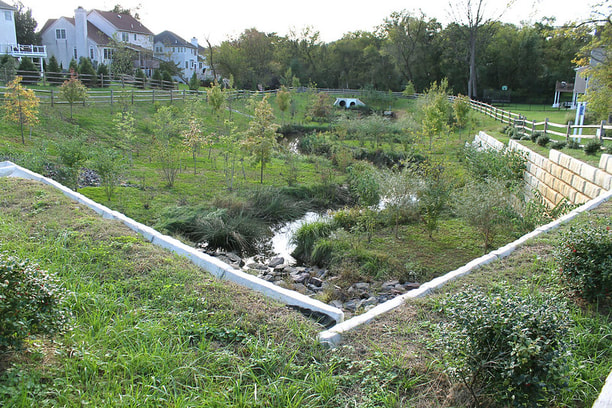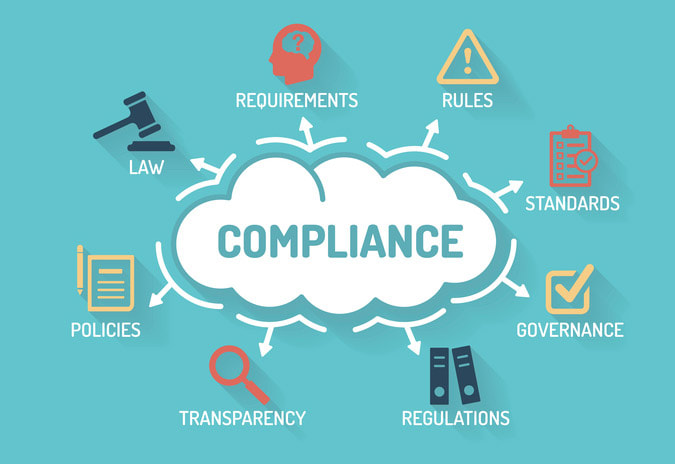|
Do you currently have an ISO-based management system implemented? Are you keeping up with the necessary compliance obligations? Do you understand the risks to your business by not meeting compliance obligations? Read on to find out how to maintain compliance obligations for your ISO-based management systems. If your business is currently operating with an ISO-based management system (ISO 14001:2015 for environmental, ISO 45001:2018 and/or OHSAS 18001 for occupational health & safety), then it is important, at a minimum, to maintain compliance obligations for your business to succeed. Compliance obligations refers to mandatory legal requirements that your business must comply with and other requirements which your business chooses to comply with. Examples of compliance obligations include applicable laws and regulations, industry standards, corporate requirements, codes of practice, agreements with non-governmental organizations, and other voluntary commitments.
One of the basic requirements of both the ISO 14001 and OHSAS 18001 standards is maintaining compliance with legislation and regulations. Here is an overview of the steps to ensure that your compliance obligations are on target. 1. Identify applicable compliance obligations. 2. Ensure your business have access to the applicable legal and other requirements. 3. Periodically check for updates in legislations and regulations in order to maintain your prepared list of compliance obligations. 4. Ensure that proper processes, activities and procedures are implemented in order to comply with the identified legal requirements. 5. Periodically evaluate compliance with applicable legal requirements. IDENTIFY RELEVANT LEGISLATION, REGULATIONS AND OTHER REQUIREMENTS One of the key elements of the ISO standards mentioned above is identifying applicable compliance obligations. The identified legislation and regulations that are applicable to your business must also relate to the environmental and/or OHS aspects of your business. Identifying all relevant legislation and regulations involves extensive database searches that cover federal, provincial and municipal requirements. Don't forget the other requirements that must be identified, including corporate policies, customer standards, industry standards, agreements, etc. KEEPING UP TO DATE WITH COMPLIANCE OBLIGATIONS A list of compliance obligations for your business must be maintained and kept up to date, especially when regulatory authorities publish changes to legislation and regulations. It is therefore, important to keep track of these changes and evaluate how they may affect processes and activities. Identify a person (in-house or out-sourced) to keep track of legislative and regulatory changes, who can assess the applicability of the legislation and regulations to your business, and communicate the changes to other staff members. Tracking changes can be conducted periodically (monthly, quarterly, annually). The person responsible for keeping track of and evaluating the legislation and regulations must be competent to do so. A strong knowledge of regulatory requirements within all government levels is necessary to successfully identify the legal requirements applicable to your business. LINKING COMPLIANCE OBLIGATIONS TO YOUR ACTIVITIES AND PROCESSES Upon identification of your compliance obligations, it is important to link compliance obligations with the environmental and/or OHS aspects of your activities and processes. This connection will help to prepare a proper operational procedure outlining who is responsible for overseeing the compliance obligations related to the environmental and/or OHS impacts on the business. EVALUATION OF COMPLIANCE OBLIGATIONS Another important element of the ISO-based standards is the periodic evaluation of compliance obligations. The frequency and timing of conducting an evaluation can vary depending on level of importance, operating conditions, changes in compliance obligations, and past performance of your business. The evaluation includes a review of all relevant documented information and/or records that has been retained as evidence of compliance. The evaluation can be in the form of a compliance audit. MANAGEMENT OF RISKS Maintaining a current list of compliance obligations for your business is one way to help reduce environmental and/or OHS risks. Some of the risks can be in the form of environmental impacts such as air pollution, major spills of hazardous liquid materials, financial costs in the form of environmental fines and penalties, or OHS risks such as injuries to a worker. An evaluation of compliance obligations is a method to manage and potentially lower the risks of non-compliance. Maintaining compliance obligations and conducting periodic evaluation of compliance are necessary to ensuring your management systems are effective. Of course there are other key elements of the ISO Standards that are required for a successful management system, which were not the focus of this article and it is strongly encouraged to refer to the ISO Standards for further details. Are you struggling to find the time to keep up with your compliance obligations list? Envirolum Consulting Inc. can help! Contact Connie Lum at [email protected] for a complimentary consultation.
1 Comment
 On March 6, 2019, the federal government recently published the new Environmental Emergency Regulations, 2019 in the Canada Gazette. The purpose of these regulations is to help reduce the frequency and severity of accidental spills of certain hazardous substances into the natural environment. They come into force on August 24, 2019. Hazardous substances Schedule 1 of the E2 regulations includes 249 substances that pose an acute hazard to the environment or to human health should an accidental release occur. The substances listed on Schedule 1 are different from the substances listed on the NPRI Substance List. There are six hazard categories covered under the final regulations:
This HazMat Magazine article offers an excellent summary the applicability of the regulations, the requirement to prepare Environmental Emergency (E2) Plans, reporting requirements, and the impacts on business. Envirolum Consulting Inc. can assist you with an assessment and provide you with a report to show that the E2 regulations don't apply to your facility. Or if necessary, we can assist you with implementation of the E2 Plans and meeting the reporting deadline. Contact us to find out more. Additional information can be found on the Environment and Climate Change Canada 's website. Canada, Emergency Response, E2, Environmental Emergencies, Regulation, Spill Response, Hazardous Substances
What part of the ESDM Report would be updated? As a result, the Emission Summary Table would be updated and air dispersion modelling may be required. The description of sources and new emissions estimation would also be updated to reflect current operations. If nothing has changed and the existing ESDM report reflects current operations, a letter can be appended to the previous year’s report indicating that it is up-to-date.
Do you have more questions? Email [email protected] with your questions about your ESDM Report and we can discuss the regulatory changes that may be applicable to your facility Regulatory Changes are comingProposed Environmental Activity and Sector Registry (EASR) Requirements for Plant and Production Processes with Air and Noise Emissions
With a new commitment to reduce review time of Environmental Compliance Approval (ECA) applications, the Ministry of Environment and Climate Change (MOECC) is moving towards using the EASR, an online self-registration system, for approvals of new ECAs and amendments to existing ECAs. The EASR will replace the requirement to submit ECA applications to the MOECC for review and will apply to prescribed manufacturing sectors. Who will this affect? The EASR for air and noise emissions will apply to all plants and production processes except high risk/more complex activities. Does your facility meet the eligibility criteria? In order to be eligible for this EASR, your facility’s primary NAICS code must NOT be identified as one of the NAICS codes set out in the Schedule of the proposed EASR Regulation. The following activities are NOT eligible for EASR registration: 1. Any one (1) of the following activities:
3. Two or more adjacent properties where the boundary of one property touches the boundary of the other that are to be considered as a single property. 4. Mobile activities. What are the operational requirements to register under EASR? In order to be eligible for this EASR, assessments of air, noise and/or odour emissions from the facility must be reviewed and completed. Operating procedures and maintenance programs for all sources and contaminants must be prepared and implemented as per the proposed EASR regulation. Documentation, including records must be readily available for inspection at the facility. Will an ESDM Report or Acoustic Assessment Report still be required? Yes. An ESDM report and/or acoustic assessment report will be required with necessary supporting documentation (i.e. odour screening form, Best Management Practices Plan (BMPP), if applicable) as per regulations and guidelines prior to registration. A BMPP for fugitive dust control will be required if sources of fugitive dust are identified in the ESDM report. The assessments summarized in these reports must be updated once every ten years or to the latest update if modifications are made. When does the new EASR Regulation come into effect? A draft of the regulation is currently under review on the Environmental Bill of Rights (click here). The proposed date to put the EASR for plant and production processes in force is January 31, 2017. Eligible facilities will be given ten years to transition to the EASR. If your facility is currently operating with an ECA and meets the eligibility criteria for the new EASR, the ECA will no longer apply as of January 31, 2027. If you make any modifications, you will be required to register on the EASR prior to this date. What if an ECA application is already submitted for review? The MOECC is proposing that applications received on or before December 31, 2016 will have the option to remain in the ECA process or be withdrawn to allow for registration on EASR. What are the MOECC fees to register on EASR? The EASR fee for plant and production processes is proposed to be $2,353 with no annual increase. Find out if your facility is eligible for the EASR registration. For more information contact Connie at Envirolum Consulting Inc. Contact Info: Connie Lum [email protected] NOTE: Information provided in this fact sheet is subject to change pending on final decisions of the EASR Regulation which is currently in draft and under review by the MOECC. |
AuthorFounder of Envirolum Consulting Inc. Archives
April 2020
Categories
All
|
Services |
Company |
SupportENVIROLUM CONSULTING INC. © 2024. ALL RIGHTS RESERVED.
|


 RSS Feed
RSS Feed